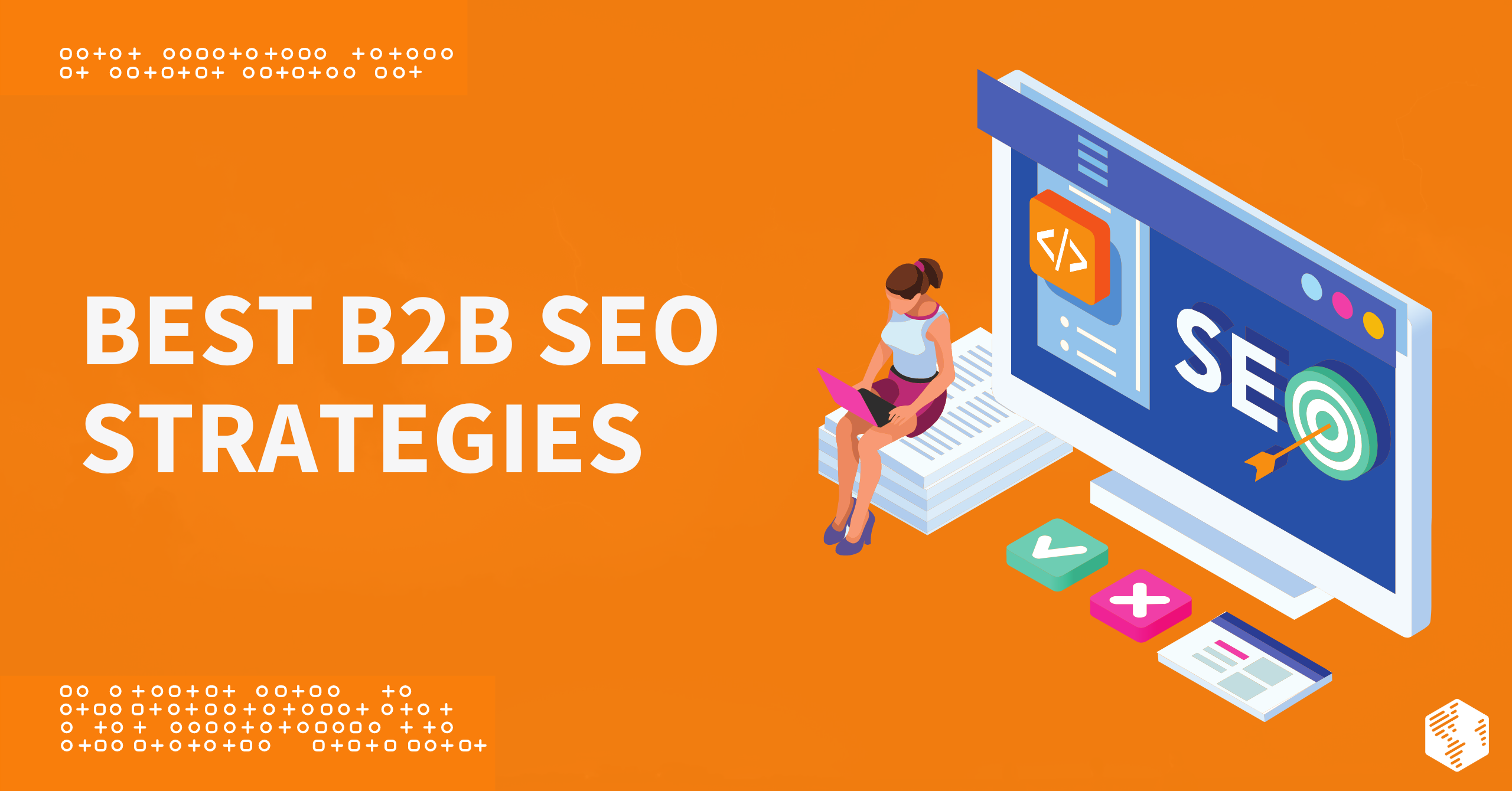Table Of Contents
For your business-to-business (B2B) company to succeed in an increasingly competitive market, search engine optimization (SEO) must play a role in your B2B marketing plan.
Whether you are producing video content for your company’s YouTube channel or writing articles for your website’s blog, content is king in the cyber environment—and your goal should be content that is genuine and answers the questions that people are searching for.
The process of generating business leads through content promotion and search engine optimization is called inbound marketing. According to HubSpot:
Inbound is a method of attracting, engaging, and delighting people to grow a business that provides value and builds trust. As technology shifts, inbound guides an approach to doing business in a human and helpful way. Inbound is a better way to market, a better way to sell, and a better way to serve your customers. Because when good-for-the-customer means good-for-the-business, your company can grow better over the long term.
 A better illustration of this definition is that inbound marketing aims to attract, engage, and delight the ideal customer with high-quality content and great customer service.
A better illustration of this definition is that inbound marketing aims to attract, engage, and delight the ideal customer with high-quality content and great customer service.
That’s why creating valuable content is the most important rule you need to follow if you want your website to rank well on search engine results pages (SERPs). Then, after you have created valuable, optimized content and increased the ranking of your website, you can develop a plan for getting inbound links from other trusted industry sites, reaching qualified leads in your target audience, growing your customer base, and generating organic sales.
The Importance of SEO for B2B Companies
How do most customers shop for products and services? On the internet. That means it’s crucial for B2B companies to have a strong online presence.
By investing in an SEO framework, your website and content are more likely to be seen by your target audience. It’s a critically important part of any B2B marketing strategy—and, over time, the payoff is worth it.
Reaching your target audience at every stage of the buyer’s journey is a proven way to get more qualified leads and accelerate growth. When you invest in SEO, your website will begin to rank higher on SERPs. Then, qualified leads are more likely to find your website, view your content, and purchase your products or services.
On the other hand, if your B2B company does not show up on the SERPs of potential customers, you will miss out on significant revenue and growth opportunities.
SEO makes an impact on new lead acquisition, lead generation, and website traffic. An optimized website not only ranks higher on search engines but also builds credibility. With an SEO framework in place, your business will reach new audiences and position your company as a leader in your field.
Why Your Business Needs to Be Visible Online
Having your business appear in front of as many users as possible is, obviously, a good way to grow your audience. But where most B2B companies get it wrong is concentrating on talking about their products and services instead of focusing on their clients—and what they are trying to find online.
Make no mistake: Your competitors are currently investing in online marketing through research and content generation. The ones that don’t fully use the SEO strategies and tools at hand will lose out on lead opportunities.
Why?
Look at it this way: When your clients research their pain points, they will start their search online and investigate the companies that show up in response to their queries. If your business has a strong digital presence and an optimized website, prospective customers are more likely to find your company.
Your website should present a clear path that guides the user to the solutions you provide. After buyers have found your company, you have a responsibility to address their questions so that they can see how your products or services can help them.
Look Beyond Keyword Research Tools
SEO keyword research tools are an excellent way to study the overall volumes of popular terms. They can validate your assumptions about which keywords to go after for your business and the topics you want your website to rank for.
However, the problem is that the data from those keyword research tools are taken by most marketers at face value—when the reality is these numbers are rough estimates and shouldn’t be used to anticipate the amount of website traffic generated by those keywords.
Spend time focusing on research and optimizing your content as a means of turning your writing into something which provides the reader value.
Be Mindful of Social Media
Almost everyone loves surfing social media networks and sharing content on Twitter, Facebook, and Instagram. Should your B2B company focus your marketing efforts on social media instead of SEO?
Let’s look at what the data has to say.
Go ahead and have a peek at the amount of traffic coming from social media to your website—you’ll be surprised. If you still aren’t convinced, compare your natural search traffic to your social network traffic in Google Analytics!
Posts on Twitter and Facebook continue for specific periods of time until they are gone. The traffic that leaves the social network site and does the click-through to your company’s website expires along with the post and is restricted as well. There is value in sharing on these platforms, but not to the extent that many marketers think.
Is 9% of your total traffic worth 30% of your time? Or is organic search a better use of your resources?
The good news is that some social media channels are SEO-friendly. For example, YouTube and Pinterest are great options for generating website traffic since they’re search-engine-based. YouTube is especially valuable, so consider adding YouTube videos into your articles and other content.
Social media is an important content distribution channel and an excellent way to reach your target audience—but when it comes to getting the most bang for your buck, organic search is the clear winner.
A Complete B2B SEO Strategy Framework
SEO is the process of making your web pages visible to people who use search engines. As part of an inbound B2B marketing strategy, SEO entails reaching professionals and businesses via search engines.
When planning a B2B SEO strategy, there are three major categories of SEO that should be considered: on-page SEO, off-page SEO, and technical SEO. These are the three pillars of SEO, no matter the size of your business or the industry in which you operate:
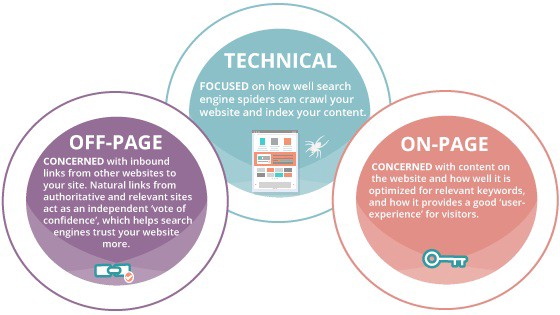
- On-page SEO has to do with content and everything else that goes into making a particular web page rank well on SERPs.
- Off-page SEO deals with the activities (like backlinks and citations) that happen on other websites across the web, which improve the ranking of a particular webpage.
- Technical SEO refers to the things that go on behind the scenes that make your website easily adapt to search technology, such as HTML, sitemaps, canonicalization, etc.
Another thing to keep in mind? Optimizing your website for the search engines is a slow process. Studies have shown that it can take as much as a year or more for quality articles to rank on Google—and that’s for material that is optimized for search queries that online consumers are typing into search engines.
Content Is King: The Future of SEO Content Marketing
SEO and content marketing go hand in hand.
If you are creating content, a strong SEO strategy is one of the most effective ways to get your content in front of your target audience. And vice versa—an SEO strategy won’t work without high-quality, high-ranking content that your website visitors want to read.
These fields have both evolved drastically over the last few years, which means that if your content is going to rank well on search engines, your B2B SEO best practices need to stay up to date.
Here are a few of the ways content marketing has changed—and how your SEO framework should change with it.
Natural Language Processing
There is often a wide gap between the words people use to search for information and what content they actually want to find. If potential customers are using the wrong keywords to find your products or services—even if that’s exactly what they’re looking for—they won’t see content from your company. That’s a lot of lost revenue.
Google’s answer to this dilemma is natural language processing (NLP).
NLP is the future of Google search, which makes it a critically important part of any SEO content marketing strategy. It is a type of machine learning that allows for search engines to semantically interpret queries. In other words, NLP allows Google to understand the context of search queries, identify relationships between words and topics, and categorize text by function, content type, meaning, structure, and more.
With NLP technology determining how content is ranked on SERPs, B2B companies must prioritize using natural language when writing content. Writing for the user instead of for a search engine has never been more important.
Keywords vs. Phrases
Search queries have become more conversational than ever before, thanks to the rise in mobile devices and voice search. While fragmented keyword terms dictated an overwhelming majority of search queries in the past, it’s now more popular for people to ask questions or use phrases to solve a complex query.
In response, Google and other search engines have focused on better understanding conversational phrases.
What does that mean?
The traditional approach to keyword research has changed.
Instead of aiming to hit a dozen high-ranking keywords within a content piece, there are now thousands of long combinations of words that are regularly searched within the topic area. It’s no longer good enough to hit a few keywords; instead, to produce successful results, marketers have to take natural language processing technologies and conversational phrasing into account.
Topic Clusters, Pillar Pages, and More
A well-organized, structured website is a critical piece in any SEO framework. Search engines now find websites built around topic clusters—clusters of content centered around a specific topic—more reputable than websites without a solid information architecture plan in place.
Think of it this way: Topic clusters not only help your readers solve their problems but also define your niche in your corner of the internet.
Pillar pages are larger pieces of content that cover aspects of your core topic. Each topic cluster could have several pillar pages covering major areas of the topic. Then, other content formats like blogs, white pages, FAQs, and more can branch off from each pillar page.
The key is to link each piece of content you create to its corresponding pillar page. This increases the credibility of your pillar pages and makes it more likely that your website will be viewed as a go-to resource for anyone searching for content in the topic cluster.
Popular Content Formats
Which content formats do people prefer?
While blogs and short articles reign supreme on the internet, other types of content are quickly gaining traction. Content like ebooks, guides, and whitepapers have boosted SEO performance for B2B companies across a variety of industries, so brands need to invest in both short- and long-form content.
Additionally, videos are an increasingly popular content format for online buyers. B2B marketers need to invest in video content like webinars, events, and more to stay ahead of the competition.
High-Value Content
Today, the most successful SEO content marketing strategies have one thing in common: They prioritize high-value content. Great content means different things for different companies and for customers at different stages in the buyer’s journey. However, the goal is to address pain points, solve problems, and build your brand identity.
To write content that your audience values, you have to know your audience. Any strong content marketing framework will start with learning about your pool of potential customers. Look into their goals and pain points, create buyer personas, determine what content your audience needs, and create high-quality, valuable content for your visitors.
B2C SEO vs. B2B SEO Strategies
Despite the similarities between B2B and business-to-consumer (B2C) companies, it’s important to note that these companies approach SEO differently. While the same principles apply to the two concepts, they aren’t entirely the same, and there are features that distinguish one from the other.
This difference is due to how B2B and B2C companies operate.
Here are some ways that B2B SEO differs from B2C SEO.
Long-Term Investment
B2C companies sell directly to individual consumers. However, because B2B purchases are long-term investments, there is usually more than one person making a purchasing decision. Multiple decision-makers may be at play—from managers and IT professionals to CEOs and analysts.
This means that relevant webpages will have to be optimized to answer questions from a variety of professionals with different levels of experience.
Low-Volume Keywords
The B2B space is smaller than that of B2C; therefore, there’s a need to target a lot of high-value but lower-volume keywords that are easier to rank for in Google.
Lower Conversions for Keywords
There may be a lot of people in your industry searching on the internet, most of them aren’t ready to make a purchasing decision. Instead, they’re simply in search of information or tools that could simplify their work or life.
There is less ecommerce competition for keywords related to B2B keywords.
A Focus on Thought Leadership and Branding
The major goal of a B2B SEO strategy is to make a lasting impression of the brand in the minds of prospects and customers.
Unlike a B2C SEO strategy, the goal of B2B SEO isn’t entirely on generating an outright sale; the aim is to generate demand for your products and services.
How to Create a Complete B2B SEO Strategy: A Step-by-Step Guide
Let’s explore the strategies you should adopt in 2022 so that you can rank higher than the competition and generate sales.
1. Create Search-Relevant Landing Pages
At every stage of the buyer’s journey, your audience has different questions to which they’re constantly searching for answers. Your SEO strategy should strive to answer these questions for each stage.
What does that mean?
Your landing pages should be created to answer the different questions that pop up at the differing levels of the sales funnel.
To be able to meet the needs of your target audience at all levels, use a B2B buyer’s journey map to learn the thought patterns of your buyers as well as what influences them.
You can make the buyer’s journey map by conducting customer interviews, surveys, and research. In turn, this will help you get first-hand information from the target audience.

It’s a lot easier to create a good and valuable landing page when you have a B2B buyer journey map. Let your landing pages be relevant to the search of your target audience. Take advantage of the opportunities available at every stage of the sales funnels to cater to the needs of your target audience by creating valuable content on relevant landing pages.
Stage One: Awareness
For example, at the awareness stage of the buyer’s journey, your landing pages should have a broad range of keywords so that you will be able to attract a large audience base through your content and then convert them in the long run.
The landing page at the awareness stage should contain phrases that are specific to your brand as well as the target audience that it is meant for.
Stage Two: Consideration
For landing pages in the consideration phase, let the content revolve around comparing your brand to that of a competitor. Potential customers in this phase are interested in comparing your product with other available ones.
Your landing page at the consideration phase may look like the ones below. These are the two screenshots of the landing pages of two rival companies: Drift and Intercom.
On their respective landing pages, they compare their brand to the other rival—which gives their targeted audience the impression that their brand is better than the other.
Stage Three: Decision
If potential customers are going to purchase your products or hire your services, your landing pages need to provide value and help them make an informed decision. This type of landing page will make it easier to adjust your SEO strategy around what is working and what is not.
Stage Four: Delight
Creating search-relevant landing pages will help you retain your audience, attract new customers, and keep them engaged in every phase. By doing so, you’ll increase the chances of your customers having a positive experience with your brand and becoming loyal ambassadors to your company.
2. Improve User Experience Across Your Entire Website
How pleasant (or unpleasant) it is for users to use your website can affect visibility and ranking on search engines. A valuable SEO strategy for B2B companies is to optimize your website for your end-users.
Search engines are out to show the best results to the user’s query, which is why you need to think of the quality and value your content will add to the user before uploading it to your website.
Online users avoid spam websites that are slow to load and don’t offer useful information.
If your website is perceived as being low quality, then its bounce rate will be high. Search engines such as Google tend to rank sites with low bounce rate higher than sites with high bounce rate.
Below is a chart showing the ranking factors that Google considers in the SERPs. Bounce rate is the fourth, according to a study by SEMrush.

The reason search engines consider bounce rate as a determining factor for ranking is that if a user spends more time on a web page, it means the page is useful to the user. However, if a user bounces off quickly or within seconds (especially when the page hasn’t answered their question), then in Google’s eye, the page is poor quality.
And since Google only wants relevant pages to rank high, it will automatically push pages with low bounce rate to the forefront of SERPs.
To improve user experience, there are certain things you can do to ensure that users get engaged with your site and stay longer. Here are some of the techniques you can use to improve experience for all users on your website.
Make Your Posts Easy to Read
Everyone that comes to your page will only stay if your content is easy to read. The more people read your content, the lower the bounce rate and the higher the organic rankings—all things being equal.
To make your post readable, ensure that the sentences are persuasive and clear, write short paragraphs, use subheadings and bullet points, and include relevant images.
More importantly, ensure that the content is helpful to your visitors.
Write in the Inverted Pyramid Style
The inverted pyramid style is a great way to create an interesting and helpful article.
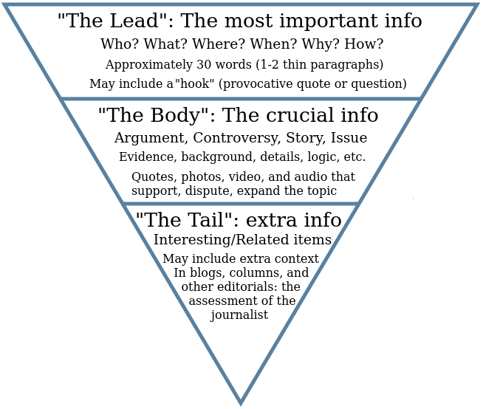
By following this concept, you will address the most important information at the top of the post (“The Lead”) and the least important at the bottom of the page.
The inverted pyramid style was invented more than a century ago, and it remains the best formula for creating a helpful and engaging piece of content, including blog posts, videos, and more.
Why should you follow this style?
Because most readers tend to just scan through a page instead of reading every word. If the vital information is scattered all over the page, it will be hard for them to see the value in your website. On the other hand, if the important information is at the top, you can capture the interest of the users before they bounce.
Break Up Ideas into Multiple Sentences
Make use of trigger words or phrases to capture the interest of the reader. This will keep them interested in your content and reduce the bounce rate.
Improve Page Design
Poor usability is a major cause of a high bounce rate. If the user experience is awkward, there is every possibility that the user will exit the site immediately.
Analyze and improve the current page design on your website. Use tools like Optimizely, Google Optimize, Click Flow, and Crazy Egg to get started.
Optimize Website and Page Speed
Optimizing your website speed should always be part of your B2B SEO strategy. The speed of your website, or how fast it loads, can affect your ranking because it plays a role in determining the quality of user experience.
If your web page takes more than three seconds to load, then it’s too slow.
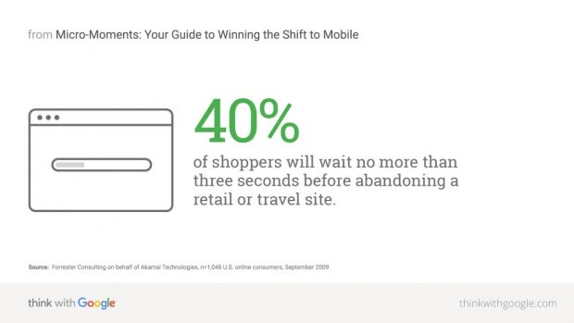
Nobody wants to waste time on a website that takes forever to load. If your site doesn’t load quickly, your visitors will exit and look for a better website, which will increase the bounce rate of your site.
Here’s another tip: Your website speed not only makes you rank higher in search engines, but it will also increase your conversion rate.
Keep Your Content Up to Date
A lot of people tend to ignore updating website content because it doesn’t look like it’s relevant, but it has been proven over the years that updating and republishing content has the potential to increase your organic traffic.
Aside from updating the title of old articles on your website to include the current year, revise articles and include current information. Remove outdated information that no longer holds value.
Updating the date on your post has two benefits:
- The click-through rate from users will increase.
- Your ranking for trending search queries will improve.
Search engines like Google value relevancy and up-to-date posts and will increase the visibility of recent posts more than older posts. If the date on your blog posts is not updated, search engines will think that the content is outdated.
If you don’t want your content and website to be viewed as dated, constantly revisit old articles and update them with recent insights. Additionally, state when the update of the post happened in the title or in the body copy of the content so that the users can see it.
Also, ensure that the date on your entire website is current to avoid being pushed to the bottom of Google’s SERPs.
Pay More Attention to Topic Clusters Instead of Keywords
Your website will not end up on the first page of search engines just because your content is focused on keywords. Keywords are no longer enough to rank you high; the context around them also matters.
To create helpful content, you should equally cover all the closely-tied keyword clusters. For example, here’s an illustration showing the clustered keywords related to workout routines:
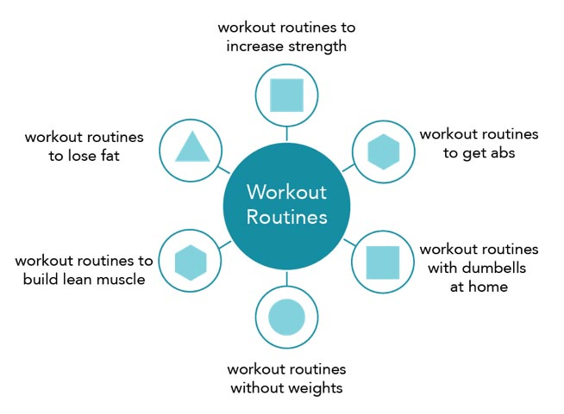
Consider what your target audience is looking for instead of focusing on the different ways you can phrase search queries. To be able to accurately do this, you need to know your audience.
Why?
The type of content you create is largely dependent on your audience—their age, interests, location, and so on. If you don’t know your audience well, you will not be able to create content that will appeal to them.
Another important thing you need to do is to organize content into clusters.
Don’t focus on standalone keywords. But rather, organize your content into different themes.
Clusters are smaller pages that are linked to from the pillar page. These smaller pages explain sections in more detail. These content clusters are important because they satisfy the user’s intent. The user is able to get the exact information that they are searching for, and other related questions or subtopics that are equally important.
The cluster also creates an internally linked content that enables Google spiders to crawl over the page and rank each page high on the search engine.
In addition, you need to research keywords and use them sparingly in the content.
Even though clusters are very efficient, you should not sweep keywords under the carpet as they act as signposts to Google’s spiders and signal topics and also give hints about the nature of the content on the website to search engines.
You can make use of SEO keywords research tools to ensure that the right keywords are appropriately placed all over the content. However, since most of these third-party keyword tools get data from Google, you might as well stick to Google’s own Keyword Planner.
3. Add Value to Your Content
When it comes to SEO, a robust content marketing strategy gives you an edge. You’re able to outsmart your competitors, especially when they’re not creating useful content or building trusted links.
In order to create relevant content for your SEO strategy, you need the right keywords. Google’s autofill suggestions provide you with an insider monitoring privilege on the phrases related to your keyword phrase.
In the example below, you will see that it’s probably wise to cover other closely related topics, such as “eCommerce website SEO” and “SEO for small businesses,” when you’re primarily writing about general SEO strategies.
An article that answers a range of questions around a subject stands a huge chance of performing well in the organic search listings.
Keyword Everywhere Plugin
The Keywords Everywhere plugin for Chrome will show you relevant keywords displayed alongside your main keyword with the monthly search volume and competition.
Here’s an example of related keywords from the Keywords Everywhere plugin:
Related Searches
Next, take a look at the searches related to the segment that appears in the bottom of the SERP.
This listing includes ideas for content. Don’t just add items—make sure you examine the user intent and decide if the topic makes sense for your primary idea.
4. Build a Variety of Backlinks
The importance of backlinks (links pointing to your page from other websites) in SEO cannot be overstated.
When you’re executing an SEO plan for a B2B company, you need to put more effort into building backlinks.
Why Backlinks Are Important
This study from Moz shows the correlation between Google rankings and the number of backlinks from other websites to the page:
Backlinks are important for search engines, and for Google in particular, it’s a vital determining factor in the search engine algorithm. Without links, it’s almost impossible to rank in search engines.
Even though links are important for ranking, not every link is a good link. There are links that are of low-quality and getting such links could get your website penalized.
How to Get Backlinks
Building high-quality links is essential if you want to outsmart your competition. Here are some ways to build/earn trusted backlinks:
- Influencer marketing
- Creating data-driven content (and letting others know about it)
- Email campaigns
- Guest posts
You can build backlinks from product pages, directories, blogs, author bio sections, forums, and new sites. Endeavor to mix up your links from different sources.
Since SEO deals with the practice of optimizing your company’s website to appear in the search engine so that you can attract professionals, top-level managers, and founders to your business, it’s important that the quality of links you build to your content pages add more value to your page.
When linking from other websites to your page, do it naturally. Make sure the referring page also has useful information.
Backlink Quality vs. Quantity
If search engines such as Google discover that your website earned a lot of high-quality links, your website may be flagged for a website review.
That means you need to take things easy—and don’t try to build too many links (no matter how trusted they are) within a short while.
However, it’s a different case if your website is authoritative in the industry.
But there is a way to escape getting into this fix: All you need to do is to use about five medium quality links for every high-quality link you use.
Get Video Traffic with YouTube SEO
YouTube is one of the most popular search engines; it has more searches than Yahoo and Bing. The earlier you take advantage of video marketing, the more traffic you’ll generate for your business.
Especially in this mobile age, video content has become an integral part of inbound marketing.
YouTube videos usually rank among the top ten on Google search results. This makes YouTube a very viable avenue for your business.
Using YouTube to generate traffic, leads, and sales is often neglected by business executives—probably because a lot of them don’t know that YouTube is a search engine.
You can, however, boost your ranking by making engaging videos and optimizing the videos for YouTube. YouTube SEO is so potent that it’s been used by some brands to double their site traffic.
Even though YouTube SEO is neglected by a lot of business managers and executives, you can make the best out of it and adopt it as a B2B marketing strategy. It’s a great opportunity to build interest, trust, and loyalty to your brand, so ensure that you make proper use of it to your benefit.
To get traffic, leads, and sales from your video content, follow these simple steps.
Make Your Video SEO-Friendly
When uploading your video, ensure that it has a title, a description, and a transcript.
These features will enable the YouTube algorithm to understand the content of your video and determine how it will be ranked in YouTube search results.
Video Title
The title of your video should be clickable to increase your click rate.
Include keywords in the title—especially at the beginning. You can also add a subheading, which will increase the number of clicks you get.
To improve the video’s ranking on SERPs, make the title more than five words.
Video Description
A relevant description will enable YouTube to determine what your video is about. More importantly, it can increase your click-through rate.
You can create short and concise blog posts that will give a detailed description of the content of the video.
A lot of video creators don’t add descriptions to their YouTube videos; if you do, it will give you an extra edge over your competitors and keep viewers interested in your video. This will, of course, increase your ranking.
Video Transcript
You can turn your video description into a script of the entire video by using a video transcription service. This will help YouTube to determine the ranking of your content and make your video accessible to a wider audience.
Make Longer Videos
Videos are like other content formats: The longer the video, the better the ranking on YouTube SERPs.
Long videos have more traction than short ones.
Viewers have short attention spans, but if your video is truly helpful and interesting, people will enjoy it—even if it’s two hours long. After all, most people spend hours binging TV shows and movies.
This doesn’t mean that you should create a long, boring, and useless video. If the video is long, ensure that all the information contained in it is relevant to the viewer.
Create Custom Thumbnails
A strong thumbnail lets viewers know what the video is about. Creating a custom thumbnail that includes a title card and compelling image can increase your views and, in turn, improve your video’s ranking on YouTube.
Conclusion
It’s a great year to dominate your industry.
Especially now that Google Rankbrain and other artificial intelligence tools are able to rank useful content based on the searcher’s intent (purpose) and not necessarily on the keywords.
Why?
Because if you invest a portion of your marketing budget to create a valuable B2B SEO strategy and publish high-value content, Google will reward your business with new leads, new customers, and new sales.
It’s that simple.
That said, SEO is a broad subject. When you find what works for you, make sure you stick to it.
In the end, all the B2B SEO strategies that we’ve shared on this page may not be right for you, but one or two have the potential to multiply your leads, grow sales, and increase profits.
The aim of this article is for you to concentrate on creating real, quality, and highly relevant content that best serves those looking for questions related to your organization.
A lot of B2B businesses have got it wrong. Practice these tips to set yourself apart from the crowd.

